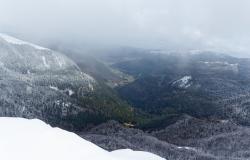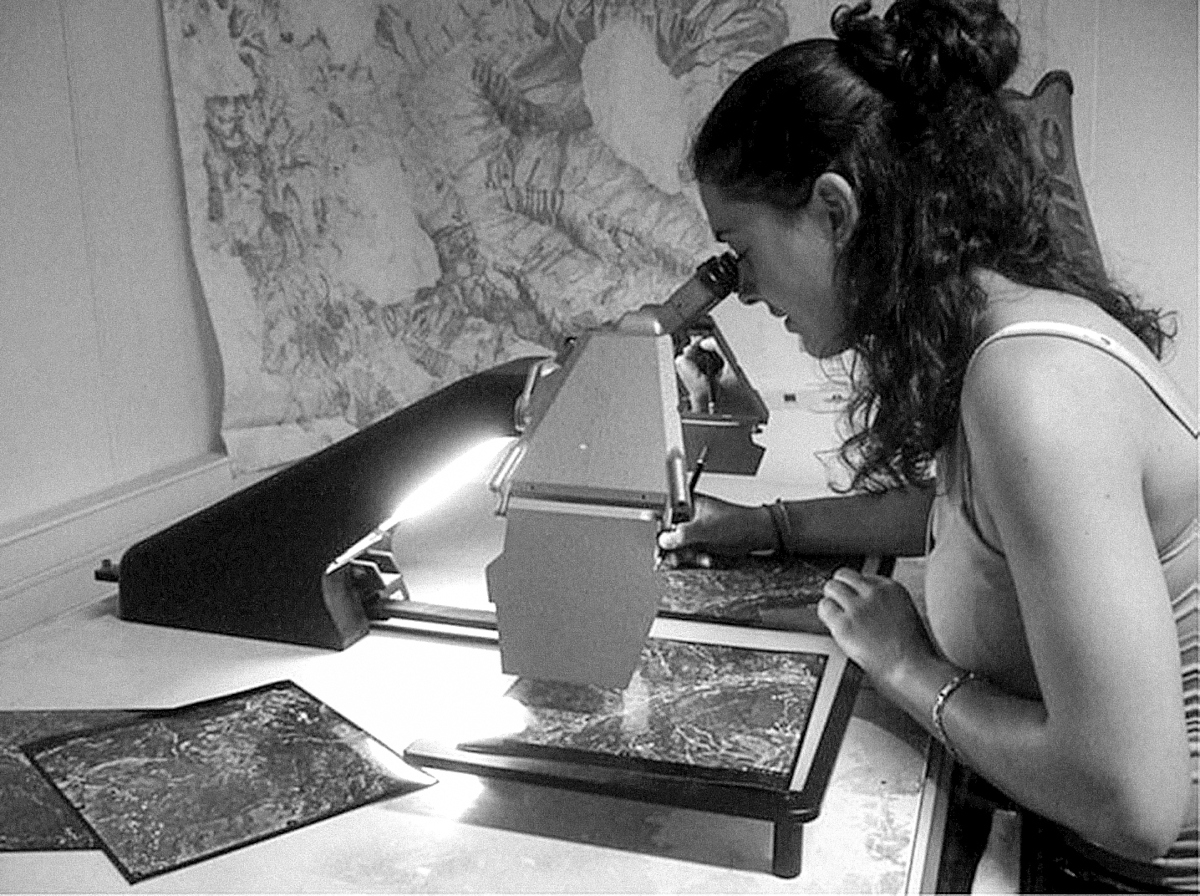Ressources dossier
Climate change and risksRisk prevention is all about partnership
Published on 02 February 2023
As temperatures and precipitation patterns change, French mountain regions must be quick to adapt to protect their inhabitants’ future economic activities, not least a sizeable part of the country’s tourist industry, all the while remaining vigilant that high standards of safety are in place. They do this by developing local adaptation strategies in line with the national risk prevention policies of the French Ministry for Ecological Transition (MTE) and, in particular, the Directorate General for Risk Prevention (GDPR). The scientific evidence base for these strategies comes, primarily, from the results and outputs of the research activities of INRAE and the French National Centre for Meteorological Research (CNRM).
Collective action for more effective risk prevention
Treated as a major risk in French national risk prevention policy, avalanche risk is managed by many actors. Overall responsibility lies with national government and this is delegated to the French National Forest Office’s RTM (Restoration of Mountain Terrain) services. It is the RTM’s job to characterise the risks that must be taken into account in local planning strategy and policy. This is mainly achieved through Regional Plans for the Prevention of Predictable Natural Risks (PPRNP) that local planning authorities must follow. Other statutory risk managers for avalanche risk prevention and the protection of buildings and infrastructure are the municipalities, who are responsible for hazard prevention and the organisation of disaster relief, the départements and the regions, who are responsible for highway infrastructure safety, spatial planning and hazard warning information. Local citizens themselves constitute a further group of stakeholders. Most directly affected by the risk, they are served by this emergency planning structure.

Link
With climate change, avalanches are migrating upslopePRESS RELEASE - Mountain areas are particularly affected by global warming, but how it impacts snow avalanches remains poorly known. Researchers from INRAE, Météo France, the CNRS* and the Universities of Grenoble Alpes, Genève and Haute-Alsace have together evaluated changes in avalanche activity over nearly two-and-a-half centuries in the Vosges Mountains, combining historical analysis with statistical modelling and climate research.
Scientific expertise and risk prevention, a fruitful dialogue
While the development of knowledge and acquisition of new data is essential to the creation of emergency plans and the specification of an overall response framework (design of active and passive structures, routes and construction of mountain roads, planting of protective forests, building of shelters, etc.), scientists may also be called upon to advise local communities, consultants and municipalities on anti-avalanche protection measures. “We only intervene in complex cases, where the outcomes depend on the most recent research and/or where the nature of problem is such that we are assigned sole responsibility for the expertise by the requesting body”, explains Florence Naaim, deputy director of the IGE joint research unit. “In fact, last January INRAE received its first ISO 9001 certification for the entirety of the quality-assurance system that underpins its delivery of expertise on the prevention of gravity-based risks in mountain areas, including avalanches”. Here, as in other areas of INRAE’s work, there is constant dialogue between researchers and expert practitioners. Research outcomes are used to help public policymakers in their work. In return, dialogue with local officers feeds back into research, allowing fresh directions to emerge and helping to give meaning and purpose to the research.

Data and modelling as a force for prevention
Dialogue with local officers feeds back into research, allowing fresh directions to emerge and helping to give meaning and purpose to the research.
An example of such teamwork can be found in the design and construction of the Taconnaz berm, where the IGE research team have worked with consultants Ingerop on behalf of the Chamonix-Mont-Blanc Valley inter-community group. This massive structure, 25 metres high, has been built across the foot of the longest avalanche corridor in the Alps, located in the Mont Blanc range. “Our task was to specify the size, position and form of the berm and the other passive defence structures required”, explains Thierry Faug, a researcher in the unit. By combining historical data from the EPA (Permanent Avalanche Survey) with digital spread models, it was possible to determine the reference events for the past century (defined by the volume and energy of the avalanches).
A range of protection strategies, devised to halt dense avalanches, was then tested in the lab, beginning with reduced-scale physical modelling (using glass beads and PVC). After estimating the residual risk for the powder element of the flow by measuring salt-water flows in fresh water, the team constructed a digital model fed with real-world topographical information from the site to test their results. “And since you can’t take the research DNA out of the scientist, we took advantage of the construction phase of the project to install automatic sensors for speed and pressure in the anti-avalanche structures, so we could assess their effectiveness and extend our understanding of how they influence the flow”, continues Thierry Faug. Impact pressures of up to 95 t/m2 could thus be recorded and compared with the model predictions, confirming the latter in what was effectively a vast quality-control exercise…
Disseminating knowledge
Meanwhile, to help project consultants and contracting authorities to reduce the vulnerability of inhabited zones, a number of technical guides on protection structures were produced. They enabled the publication in 2009 of a European reference guide on the construction of avalanche catching dams and diversion berms, that drew on the work of research teams across Europe, including IGE. Since the guide’s appearance, a regular flow of further knowledge dissemination materials has been produced.
The rapid impact of climate change, in particular, on the incidence and nature of avalanches, makes it imperative to continue research on hazards and risks, and to incorporate the most up-to-date data. However, it is clear that the most important driver in developing a form of risk prevention that is both adapted and effective will be the collaboration between our researchers and national and local authorities and organisations.
Climate change - What does the IPCC have to say about avalanches?
Best known for its international advisory reports (see 6th Report, published on 9 August 2021), the Intergovernmental Panel on Climate
Change (IPCC) also publishes special reports. The Special Report on the Ocean and Cryosphere in a Changing Climate (SROCC), which appeared in 2019, was the first to devote a full chapter to mountain regions.
“While IPCC reports traditionally have plenty to say on glaciers and the polar regions, they had previously contained almost nothing on avalanches and their associated risks, because the issue was so complex that there was a lack of available research results”, explains Nicolas Eckert, a researcher from the IGE joint research unit. Indeed, to be able to track past changes, a long and homogeneous series of observations is needed, and a relatively sophisticated armoury of statistical tools must be assembled to process them. Likewise, the forecasting of future changes in avalanche activity calls for the conversion of general scenarios for climate change into local scenarios that show changes in weather and snow cover. Complex techniques must be employed to manage the change of scale and error corrections, to force regional climate models (RCMs) using conditions from general circulation models (GCMs), to adapt models to mountain topography, and to create snow-cover models where the results from physical models must then be corrected by cross-referencing them with observations. Last, once all these tasks have been completed, data on historically-derived empirical relationships between snow cover and avalanche activity can be fed into the models.
The IPCC report, to which INRAE contributed, concludes with a high level of confidence that future natural hazards in mountain areas, including spontaneous avalanches, will occur in locations and/or seasons where they have not previously occurred. This formulation, the result of a scientific and political compromise, acknowledges the possibility of localised reductions in snow cover that would bring down hazard levels, but also emphasises the problems that could arise from rapid changes in the spatio-temporal distribution of dangerous events. We may thus expect more wet snow avalanches at high altitudes in the middle of winter in locations where there is currently no issue with snow cover. These changes must be taken into account, for example, when calculating the size of ski lifts that could find themselves on new avalanche paths, placing strong pressure at the height of the tourist season.
-
Sebastiàn Escalon & ETNA Research Unit
Authors / Translated by Teresa Bridgeman
-
Thierry Caquet, Mohamed Naaïm & Patrick Flammarion
Scientific direction
-
Lou Rihn
Illustrator
